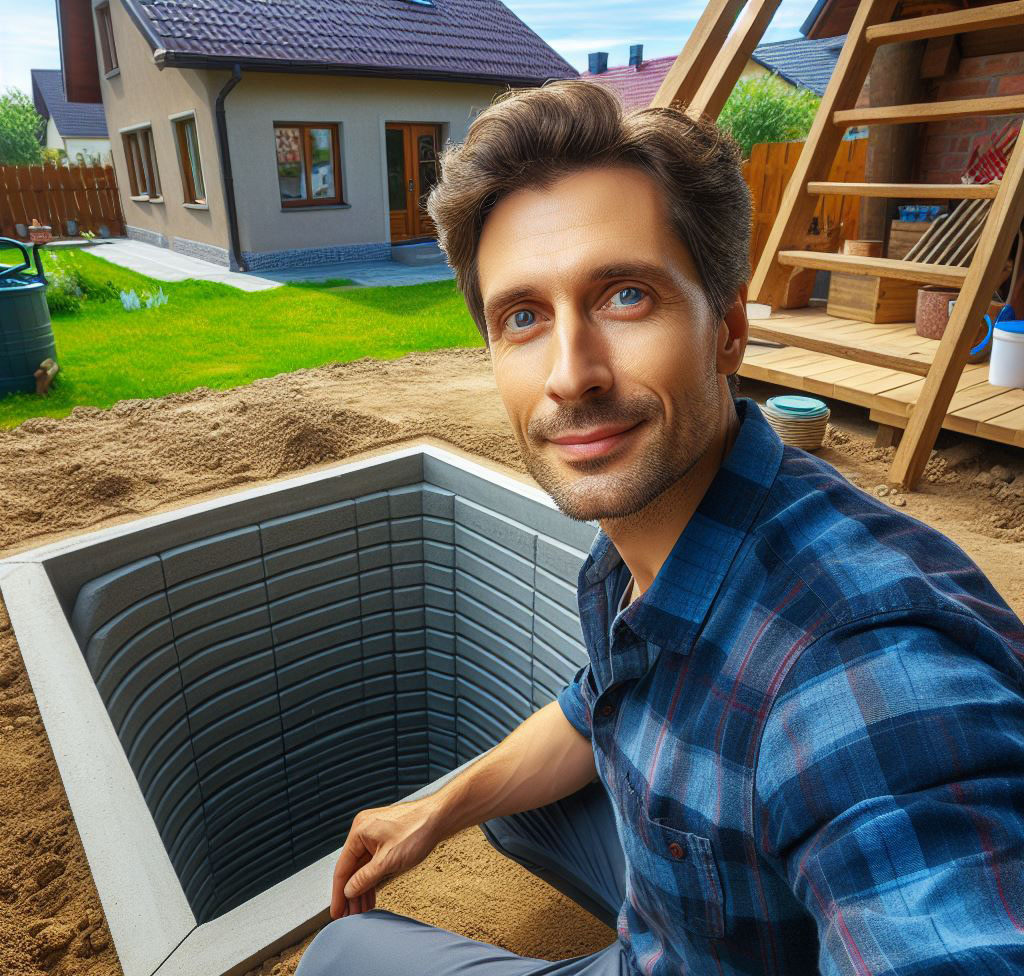In the trenches of home renovation and construction, mastering water management isn’t just about keeping your feet dry—it’s foundational to preserving the integrity of your home. Water, whether too much or in the wrong place, can undermine structures, erode gardens, and invite unwelcome guests like mold and insects. Enter the dry well: a simple, yet sophisticated solution for diverting excess water away from where it can do harm, allowing it to gently rejoin the earth, mitigating potential damage and contributing to a balanced ecosystem around your home.

Understanding Dry Wells
Definition and Purpose. At its core, a dry well is a subsurface structure designed to collect and dissipate excess surface and stormwater into the subsoil. This unseen ally works quietly, preventing water from becoming a destructive force against your property’s foundation and landscape.
Types of Dry Wells. Dry wells come in two main varieties—those with containers and those without. The former are pre-crafted units, typically fashioned from robust materials like plastic or concrete, buried to catch and gradually release water back into the soil. The latter, a more rudimentary form, relies on a cavity filled with gravel and wrapped in landscape fabric, creating a permeable void for water to filter through.
Benefits. Installing a dry well is a proactive step toward safeguarding your property. It’s an effective strategy to prevent erosion, reduce the risk of flooding, and protect structural foundations from water’s insidious reach. Moreover, it’s an eco-friendly approach to water management, recharging the groundwater supply without overwhelming municipal sewer systems or contributing to downstream runoff issues.

Planning Your Dry Well Installation
- Assessing Your Drainage Needs. Before embarking on this journey, a thorough evaluation of your landscape during rainfall can reveal much about where and how water travels and pools. Understanding the scope of your property’s drainage challenges, coupled with the local climate’s rainfall patterns, forms the blueprint for your dry well’s requirements.
- Selecting the Right Location. The siting of your dry well is critical. Aim for a spot at least 10 feet away from any structure to prevent undermining foundations. Additionally, gravity is your ally—placing your dry well in a naturally lower area can facilitate the flow of water into it.
- Understanding Local Regulations. Navigating the bureaucratic labyrinth of building codes and permits is essential. Local regulations may dictate the specifications for dry well construction, including size, placement, and materials. A preliminary consultation with your local building authority can preempt any regulatory surprises.
Tools and Materials Needed
Equipping yourself with the right tools and materials is the first step in transforming plans into reality. Here’s a rundown:
- Shovel and Pickaxe. Your primary tools for excavation. A well-sharpened shovel can make the difference between backbreaking labor and efficient digging.
- Wheelbarrow. Essential for moving dirt and materials to and from your work site.
- Landscape Fabric. This barrier keeps your dry well free from soil intrusion, ensuring its longevity and functionality.
- Gravel. The backbone of your dry well, providing the necessary void space for water absorption and dispersion.
- Perforated Pipe. A conduit for channeling water from its source to the well.
- Level. Essential for creating a flat base, ensuring uniform distribution of water.
- Tape Measure. Accuracy is key in measuring the dimensions of your excavation.
- Concrete Blocks or a Pre-fabricated Dry Well Unit. Depending on your chosen type of dry well, these materials form the structure’s core.
Tips on Materials. Choosing the right gravel is crucial, opt for a type that resists compaction to maintain effective water dispersion over time. Similarly, investing in high-quality landscape fabric can prevent clogging and extend the life of your dry well.

Step-by-Step Installation Guide
Diving into a dry well installation is like embarking on a journey through the bedrock of home renovation and construction. With precision, patience, and a touch of craftsmanship, transforming a water-logged yard into a well-drained landscape becomes not just a project, but an art form.
Preparation Stage
Measure twice, dig once. Begin by meticulously marking out your dry well’s future location with stakes and string, ensuring accuracy with a reliable tape measure. Soil assessment is paramount, you’re seeking the Goldilocks zone—ground that neither holds water like a sponge nor repels it like a slab of granite. This initial groundwork sets the stage for a successful installation.
Digging Process
Now, roll up those sleeves. Digging the pit for your dry well is an exercise in endurance and precision. Whether wielding a shovel or a pickaxe, remember, the depth and width of your excavation are dictated by the scale of your drainage needs and the size of your dry well system. A general guideline is to aim for a depth of 4 to 6 feet, adjusting based on your property’s unique characteristics.

Constructing the Dry Well
- For a Container-based Dry Well. Placing a pre-fabricated dry well into the earth is akin to setting a cornerstone. Ensure it rests level within its new home, following the manufacturer’s guidance for a seamless fit into your drainage plan.
- For a Gravel-filled Dry Well (No Container). Creating a dry well from scratch with gravel and landscape fabric is an exercise in traditional craftsmanship. This method demands a keen eye for detail, ensuring the fabric lines the hole perfectly before filling it with layers of coarse gravel, creating a porous bastion for water to seep through.
- Laying the Pipes. The veins that will feed your dry well, perforated PVC pipes, must be laid with precision, guiding water from its source to the well with a gentle incline. This is where thoughtful planning meets meticulous execution.
Finishing Touches
With the structure in place, backfilling and compacting the soil around your dry well ensures stability, while thoughtful landscaping helps it blend seamlessly into your yard’s aesthetic. Whether you choose grass, mulch, or decorative stones, the goal is integration and accessibility for maintenance.
Drywell System Maintenance
A well-maintained dry well is the linchpin of your yard’s drainage system. Regular inspections to clear away debris and periodic gravel refreshment will keep it functioning at peak efficiency.
FAQ Section
The ideal size varies, but starting with a 4-foot depth and diameter is a wise baseline, adjusting as necessary to accommodate your specific drainage needs.
Indeed, with careful planning and a scaled design, a dry well can be integrated into even the most modest of yards.
Biannual checks, especially around the rainy season, will ensure your dry well remains in top condition.
Water pooling or soggy soil near the dry well are telltale signs of trouble, signaling a need for immediate attention.
Yes, most municipalities require permits for such projects, making a quick consultation with local authorities a prudent step.
Directly connecting downspouts to your dry well is an efficient way to manage roof runoff, a practice both practical and encouraged.
Proper sizing and the inclusion of overflow strategies, such as secondary dry wells or connections to municipal storm drains, can mitigate overflow risks.
